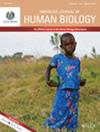Diachronic Height Changes in Europe From the Mesolithic to the Present: Exploring Possible Causes and Regional Specificities
Abstract
Objectives
A meta-analysis of diachronic changes in average height across Europe from the Mesolithic to the present, based on a broad range of literature sources.
Materials and Methods
The analysis of chronological height variability was based on skeletal remains (from the Mesolithic to the 19th century), from which height was reconstructed, and on data from living individuals measured from the late 19th to the early 21st century. In total, data from 73 skeletal series and 342 groups of modern populations, primarily from Eastern Europe, were analyzed. A regression analysis was performed using R to describe the patterns of variability.
Results
The findings indicate that height decreases during the Neolithic and remains relatively stable until the Medieval period. A decline in average height is observed during the High Medieval period. The Early Modern period marks a transition to the 20th century, during which there is a consistent increase in average height, most pronounced until the 1980s, after which the rate of increase slows slightly into the early 21st century. Temporal height variability in the European part of Russia shows regional differences.
Conclusions
The results suggest a wave-like pattern of trans-epochal changes in the somatic status of populations over an extended period, likely driven by various socioeconomic factors that dominated in different historical periods: the transition to agriculture, urbanization, political systems, industrial revolutions, and significant improvements in quality of life. Diachronic changes in height exhibit regional specificities, reflected in the variability of rates and magnitudes of secular gains across different regions and time periods.

 求助内容:
求助内容: 应助结果提醒方式:
应助结果提醒方式:


